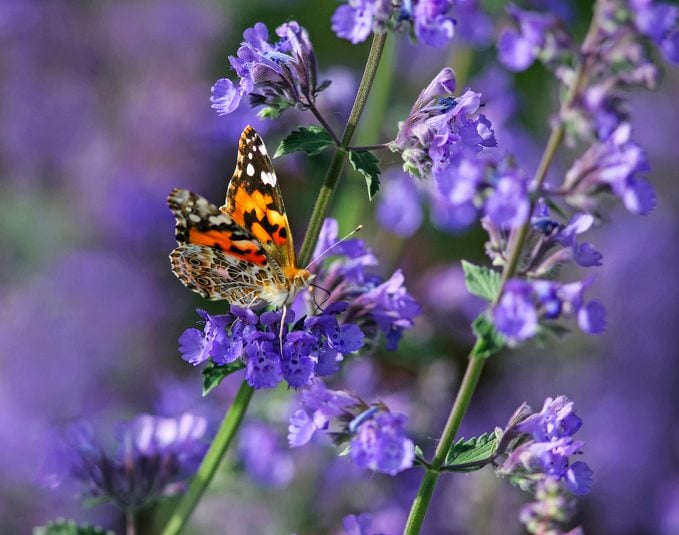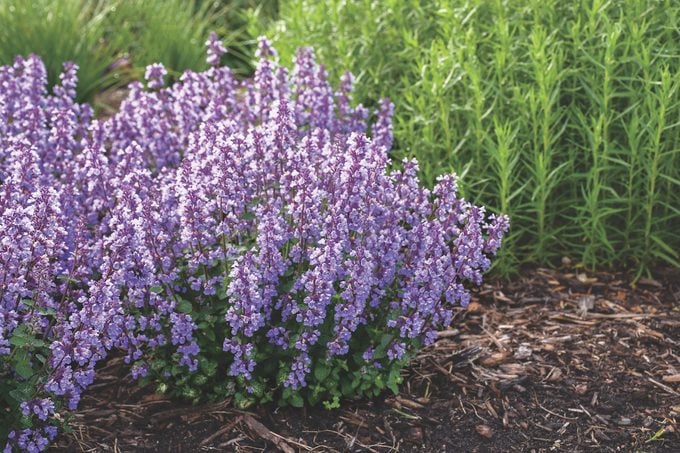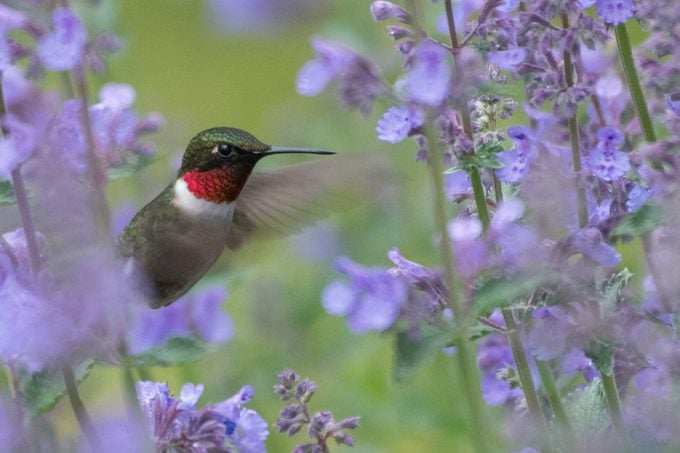Will a Catmint Plant Attract Cats to the Garden?
Updated: Jun. 20, 2023
Love the smell of catmint but don't want stray cats in your yard? Get expert tips to solve this garden problem. Plus learn when to divide catmint plants.
Do Catmint Plants Attract Cats?

“I love the purple hue and the scent of catmint, but mine has been attracting stray cats. What I should do?” asks Birds & Blooms Field Editor Jennifer Broadstreet Hess of Marion, Kansas.
Horticultural expert Melinda Myers says, “Several annual and perennial salvias have similar colored flowers as catmint. You won’t have the same fragrance, but cats don’t seem to be attracted to them. Another option is to grow the catmint out of the stray cats’ reach. If you live in a two-story home, consider growing catmint in a window box or balcony. If this is not an option, try a hanging basket.
Homemade and commercial cat repellents are another option. These do use scent to repel the cats, which may overpower the catmint smell you enjoy. Surrounding your plants with plastic scat mats might discourage the strays because the mats have blunt-tipped plastic protrusions that make walking on them uncomfortable.”
Get expert garden advice on rabbit resistant flowers.
Care and Growing Tips

- Common name: Catmint
- Scientific name: Nepeta
- Zones 3 to 8
- Light needs: Full sun
- Attracts: Bees and hummingbirds
Easy-to-grow catmint entices plenty of pollinators, and is heat tolerant and deer resistant. These flowering perennials also have attractive silvery-green or gray foliage and long-lived purple blooms. The flower spikes reach about 2 feet tall and enjoy full sun. Many newer hybrid varieties are sterile, so they are well-behaved and don’t reseed.
Check out the top 10 purple flowers that attract hummingbirds.
When to Divide and Transplant Catmint

“When is the best time to thin and transplant catmint and salvia?” asks Jennifer.
Melinda says, “For greatest success, dig up, divide and transplant spring flowering perennials in late summer, fall bloomers in early spring, and those that flower midseason at either of these times. Experienced gardeners find that they can push the limits and divide plants when time allows.
Provide proper post-transplant care whenever you divide and move plants. Water thoroughly and often enough to keep the roots slightly moist. As the new plantings become more established, extend the time between watering. Once they’re settled, care for them as you did before.”
Next, check out the top 10 bushes with pretty purple flowers.
